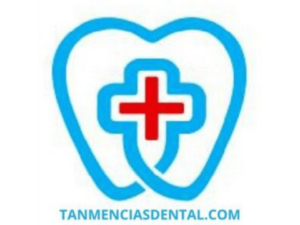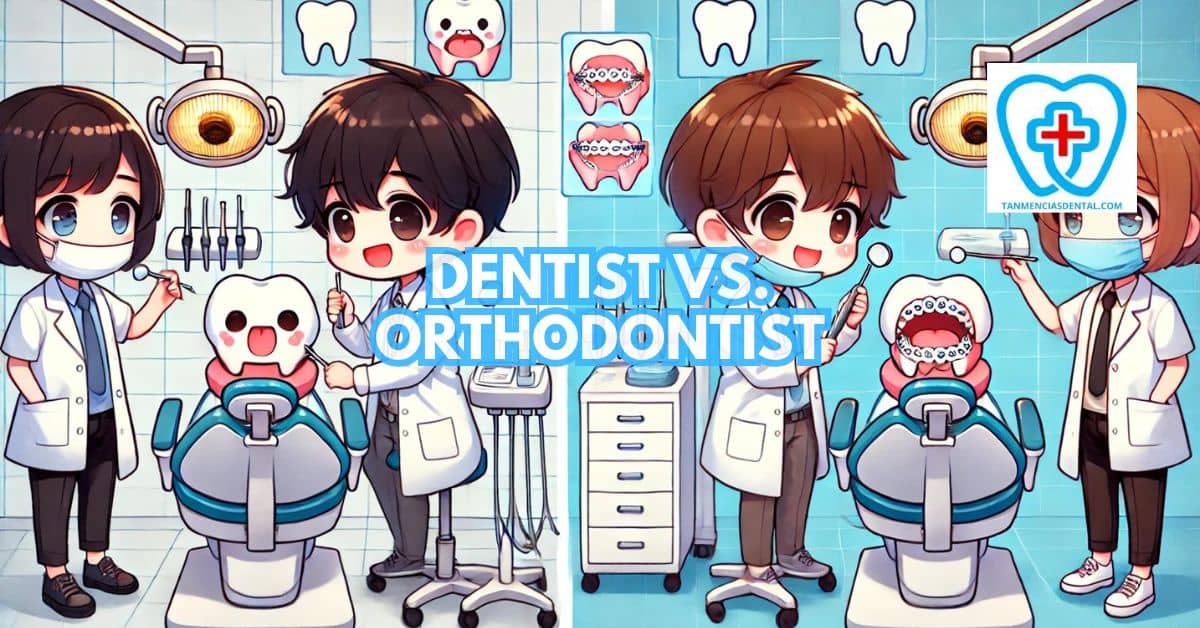Many people are unclear about the distinct roles that dentists and orthodontists play in dental care.
While both are crucial for maintaining oral health, they focus on different aspects of it.
Dentists handle a broad range of general dental needs, including cleanings, fillings, and preventive care.
Orthodontists specialize in correcting issues related to the alignment of teeth and jaws, often using braces or other devices.
Understanding these key differences helps patients make informed choices about the kind of care they need.
1. What Is the Role of a Dentist vs. an Orthodontist?
Dentists serve as general practitioners for oral health, providing treatments such as fillings, root canals, crowns, and preventive care.
Their main goal is to maintain the health of the teeth, gums, and mouth, addressing cavities, gum disease, and other common dental problems.
Orthodontists, on the other hand, focus on aligning the teeth and jaws, correcting overbites, underbites, and crooked teeth.
They typically use braces, aligners, and other appliances to help patients achieve better alignment.
Both roles are essential, but their areas of focus and expertise are different.
🦷 Interesting Things About Dry Brushing Your Teeth You Need to Know!
2. Educational Pathways: How Dentists and Orthodontists Are Trained
In the Philippines, the educational journey for both dentists and orthodontists begins with earning a Doctor of Dental Medicine (DMD) degree, which typically takes six years of study.
This includes two years of pre-dentistry courses followed by four years of dental school.
After completing their DMD, orthodontists must undergo an additional 2-3 years of specialized training in orthodontics through accredited postgraduate programs.
This specialized training covers advanced topics such as tooth movement, facial growth, and jaw alignment.
While both professions share a strong foundation in general dentistry, orthodontists gain advanced skills to address complex alignment and bite issues, distinguishing them as specialists in the field.
🦷 Can You Brush Your Teeth 3 Times A Day? What Dentists Wish You Knew
3. Exploring Treatment Options: What Dentists and Orthodontists Offer
Dentists offer a wide variety of treatments that cover routine care, such as teeth cleanings, fillings, crowns, and root canals.
They also perform preventive procedures like fluoride treatments and sealants to protect teeth from decay.
Orthodontists, in contrast, focus on treatments that involve correcting the alignment of teeth, such as braces, clear aligners, and retainers.
They work to fix issues related to bite and jaw alignment, which may require more specialized tools and techniques.
The types of treatments offered by each professional cater to different oral health needs, ensuring comprehensive care.
🦷 Can Tooth Decay Kill You? Dangers of Neglected Dental Health
4. Common Procedures: From Routine Checkups to Braces
Dentists typically perform a range of common procedures, including teeth cleanings, cavity fillings, and the application of crowns or bridges.
They are often the first line of defense for oral health issues like gum disease and tooth decay, handling problems that arise from poor dental hygiene or injury.
Orthodontists, by contrast, focus on procedures related to straightening teeth and correcting misalignments, such as fitting braces, clear aligners, or retainers.
They also address more complex issues, like jaw misalignments, which require specialized knowledge and equipment.
While both professionals handle important oral health tasks, their procedures are focused on different aspects of care.
🦷 Can You Get Gingivitis From Kissing? The Truth Behind Oral Hygiene and Romance
5. Focusing on Health vs. Aesthetics: Understanding Treatment Goals
Dentists are primarily focused on the health and function of teeth and gums, ensuring that patients maintain good oral hygiene and avoid conditions like cavities or gum disease.
Their goal is to prevent and treat health problems, which may affect chewing, speaking, and overall oral health.
Orthodontists, while also concerned with health, place a greater emphasis on aesthetics, aiming to improve the appearance of a patient’s smile by correcting misaligned teeth and jaws.
This involves treatments that enhance both the cosmetic look and the function of the teeth.
The end result is often a balance between improved appearance and better dental health.
🦷 Heartburn After Brushing Teeth: Unraveling the Mystery Behind Oral Discomfort
6. Who Do They Serve? Patient Demographics for Dentists and Orthodontists
Dentists serve a broad demographic, treating patients of all ages, from children to seniors, and addressing a wide range of oral health concerns.
Their patients typically visit for routine care as well as treatment for common dental problems like cavities, gum disease, or tooth sensitivity.
Orthodontists often serve a more specific group, predominantly treating younger patients, such as children and teenagers, who need corrective treatments like braces or aligners.
However, in recent years, more adults have been seeking orthodontic care to improve their dental alignment.
The types of patients each professional sees reflect the nature of the treatments they provide.
🦷 Can I Brush My Teeth With Salt Every Day? Exploring the Benefits and Risks
7. The Referral Process: How Dentists Work with Orthodontists
Dentists and orthodontists often collaborate to provide the best care for their patients.
In many cases, a dentist will identify a need for orthodontic treatment, such as overcrowded or crooked teeth, and refer the patient to an orthodontist for specialized care.
Dentists handle the initial diagnosis and monitor the overall oral health during orthodontic treatment, ensuring no additional dental problems develop.
Orthodontists then create a treatment plan, often involving braces or aligners, to correct alignment issues.
This partnership ensures that patients receive comprehensive care, addressing both general dental health and specific alignment concerns.
🦷 Restore Your Teeth With Dental Fillings in Marikina
8. Understanding Treatment Duration: Short Visits vs. Long-Term Care
Dental visits with a dentist are typically shorter and more routine, often lasting less than an hour for cleanings, exams, or minor procedures like fillings.
These visits usually occur every six months, unless more immediate care is required.
Orthodontic care, on the other hand, often involves longer-term treatment plans, such as wearing braces or aligners for months or even years.
Orthodontic patients frequently need to return for regular adjustments or checkups to ensure their treatment progresses as planned.
The length and nature of care differ significantly, depending on whether you are seeing a dentist or an orthodontist.
🦷 Understanding Black Tartar Teeth: Causes, Effects, and Prevention
9. Insurance and Costs: What to Expect for Dental and Orthodontic Care
The costs associated with dental and orthodontic care can vary greatly depending on the treatment required.
Routine dental procedures, like cleanings or fillings, are generally less expensive and often covered by most dental insurance plans.
Orthodontic treatments, particularly those involving braces or clear aligners, tend to be more expensive and may not always be fully covered by insurance.
Some plans offer partial coverage for orthodontic care, particularly if the treatment is considered medically necessary.
Patients should be aware of these cost differences and review their insurance policies to plan for any out-of-pocket expenses.
🦷 Tooth Extraction in Marikina: Understanding Pain Management and Recovery
10. The Importance of Both Professions in Your Oral Health Journey
Both dentists and orthodontists play a vital role in maintaining lifelong oral health.
Dentists are essential for regular checkups and preventive care, helping to catch and treat issues like cavities, gum disease, and tooth decay early on.
Orthodontists provide specialized care that improves not only the appearance of a smile but also the alignment and function of teeth, which can prevent future dental problems.
Working together, these professionals ensure that patients receive both routine maintenance and specialized corrective treatments.
Combining the strengths of both fields helps individuals achieve and maintain optimal oral health.
🦷 Exploring the Benefits of Brushing Teeth With Baking Soda: A Natural Approach to Oral Hygiene
👨⚕️ Conclusion
Choosing between a dentist and an orthodontist depends on the specific dental needs of the patient.
For regular cleanings, fillings, and overall oral health, a dentist is the primary healthcare provider.
If alignment issues, such as crooked teeth or bite problems, arise, an orthodontist offers the specialized care necessary to correct those conditions.
Both professionals are essential to ensuring a healthy, functional, and aesthetically pleasing smile.
Understanding when to visit each can make all the difference in maintaining comprehensive oral health over time.
😊 Self-Promotion
Visit Tan-Mencias Dental Clinic in Parang, Marikina City, for all your dental care needs!
Our friendly and experienced team is here to ensure you receive top-quality care, whether you need a routine checkup, orthodontic treatment, or other dental services.
If you have any questions or concerns, feel free to call us at 09171451074, send us a message on our Facebook page, or through our website’s contact form.
We are always pleased to assist and offer the highest caliber of dental care.
We look forward to welcoming you to our clinic and keeping your smile healthy and bright!

